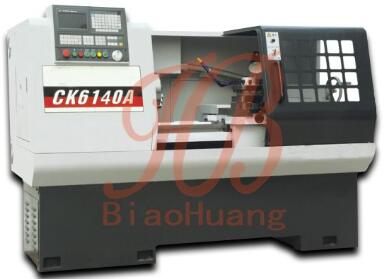Mastering CNC Lathes: Key Tips for Accuracy, Setup, and Maintenance
Aug. 18, 2025
CNC lathes have revolutionized modern machining, allowing both hobbyists and professionals to produce precise parts efficiently. While these machines offer remarkable capabilities, new users often have questions about achieving accurate results, selecting equipment, and troubleshooting issues. Below, we explore five of the most common concerns and provide practical insights to help operators maximize performance.
Tips for achieving accurate threading
Threading is one of the most challenging operations for CNC lathe operators, especially for first-time users. Achieving precise threads requires careful attention to tool offsets, spindle speed, and feed rates. Beginners often struggle with threads coming out slightly undersized or oversized, which can affect the fit of mating components. One effective strategy is to measure the first few threads carefully, make small incremental adjustments to the X-axis offset, and then run a second pass for verification. Consistently monitoring the thread depth and spacing ensures high-quality results without wasting material.
What hardware or software should I use to set up a CNC lathe
Selecting the right control hardware and software is essential for both beginners and experienced machinists. Options range from open-source systems like Linux CNC to commercial packages such as Centroid or Masso controllers. The choice often depends on budget, ease of programming, and compatibility with the machine’s mechanical components. Beginners may benefit from software that integrates CAM and simulation features, allowing them to visualize tool paths before cutting. Experienced operators often prioritize reliability and precision, choosing systems that offer robust feedback and customization options.
Which CNC lathe models or brands are recommended
When it comes to purchasing a CNC lathe, brand reputation, build quality, and support services are critical considerations. Slant bed lathes from manufacturers like Nakamura Tome or Methods are known for their durable box ways, large spindle bores, and reliable controls, making them popular choices for high-volume operations. While some budget brands may offer affordable options, they can compromise rigidity and long-term accuracy. Operators should evaluate both mechanical robustness and control system quality to ensure the machine meets both short-term and long-term production needs.
What are the first-time CNC lathe programming tips
Programming a CNC lathe for the first time can be daunting, but understanding core principles helps prevent errors and wasted material. Beginners should start by mastering G-code fundamentals, including basic commands for movement, spindle control, and tool changes. Using canned cycles for common operations like threading, drilling, and boring reduces programming complexity. Additionally, simulating tool paths before actual cutting is a valuable step to identify potential collisions or errors. Gradually building familiarity with feeds, speeds, and tool offsets ensures consistent results and confidence in operating the machine.
How do I diagnose misalignment like tool holders or turret shift
Maintaining proper alignment is essential for precision and part quality. Misalignment in the turret, tool holders, or spindle can lead to inaccurate cuts, uneven surfaces, and wasted material. The first step is to use proper measurement tools such as coaxial indicators or dial indicators to detect deviations. If misalignment is found, the operator should carefully realign the turret and verify the axes for consistency. Regular checks and calibration are especially important after heavy use or after changing tooling setups. Establishing a routine for alignment inspection ensures consistent precision and prolongs the life of both tools and machine components.
Conclusion
CNC lathe machines are powerful tools capable of producing precise and complex components, but they require careful attention to threading accuracy, hardware and software setup, machine selection, programming, and alignment. By understanding these key aspects, both beginners and seasoned machinists can achieve optimal results, reduce material waste, and maximize efficiency. Investing time in learning these fundamentals makes the CNC lathe not just a machine, but a reliable partner in production.
67
0
0



Comments
All Comments (0)